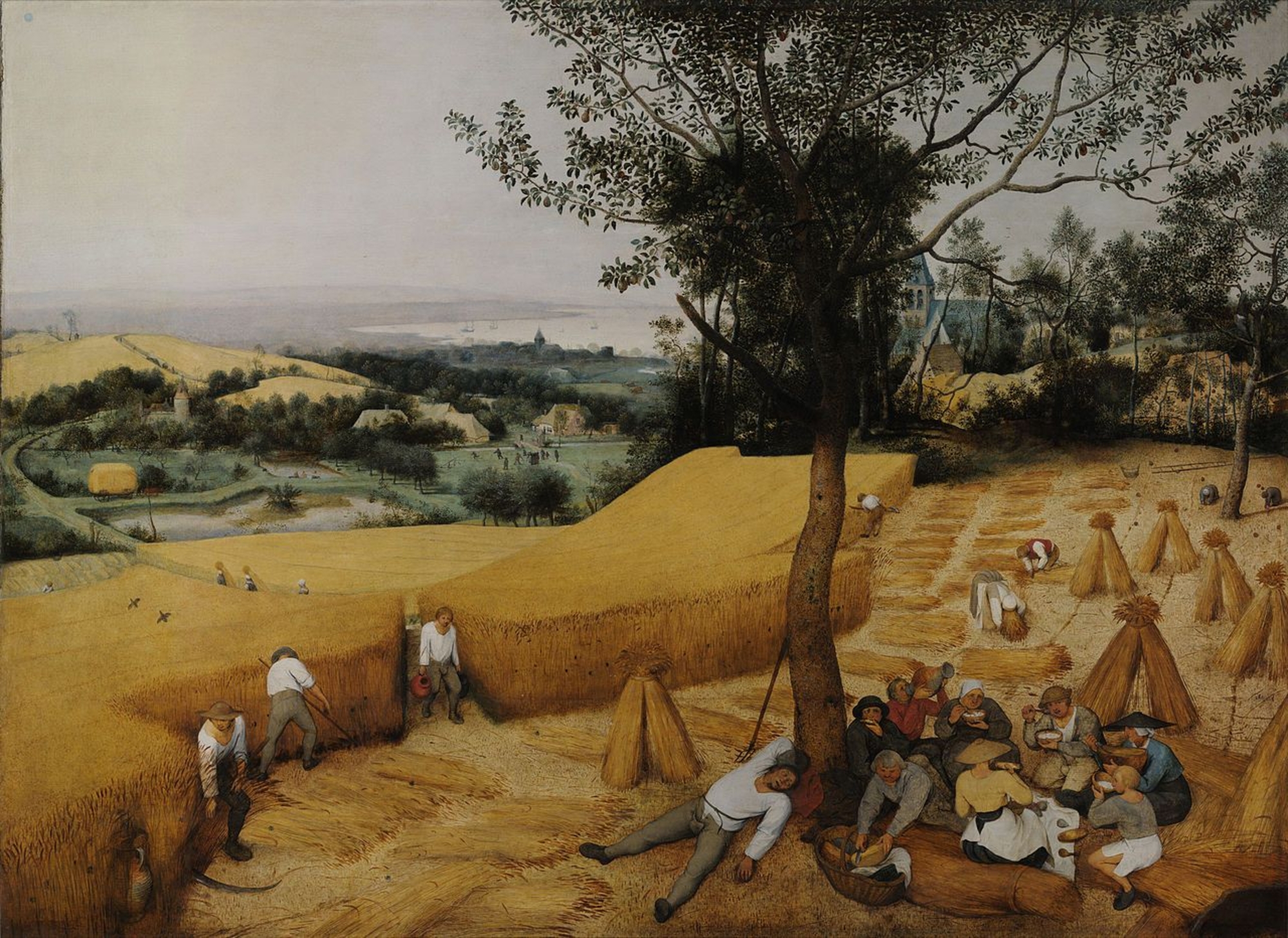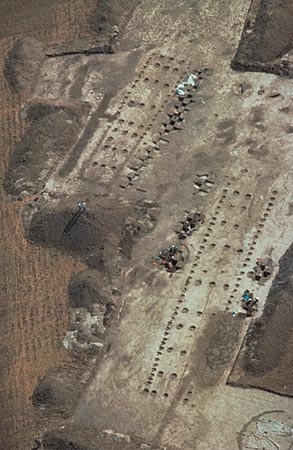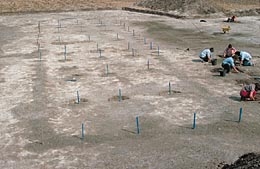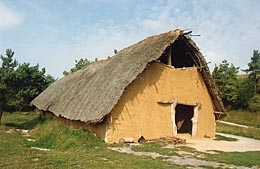- Home
- Discoveries
- The first farmers
- Between 5,000 and 2,800 BCE: human settlement
Aerial view of the excavation of the large Danubian houses by URA 12. Cuiry-lès-Chaudardes (Aisne).
Same site. View of a Danubian house. It is easy to make out the postholes and the palisade enclosures. The excavation team are at the site of a lateral pit that is rich in discarded material.
Reconstruction of a Danubian house on the Samara Estate in La Chaussée-Tirancourt (Somme). The walls are made of wood covered with cob, and the roof is made of thatch. Photo: J.-C. Blanchet.
From a plane, the oldest Prehistoric periods cannot be detected on the ground.
What is more, in northern France, Paleolithic and Mesolithic sites are generally buried under several meters of various types of sediment — such as sand, gravel, clay, peat, etc. — or hidden in sheltered, forested areas, like the sandstone outcroppings that sheltered the Tardenois people.
Near the well-known encampment of the reindeer hunters at Verberie (Oise), the outline of a Gallic dwelling with its postholes, pits, and ditches, situated on the non-flooding left bank of the Oise River, is perfectly visible, but the remains of the Magdalenian hunters — dating to about 12,000 years BCE — are invisible. Here, some 7,000 years ago, the region's first farmers arrived in successive waves from Central Europe.
These "colonists" established their villages in the valleys of the Marne, and then the Aisne, and finally the Oise, at a time when these areas were still inhabited by small groups of the last hunter-gatherers and Mesolithic fishermen. This initial wave belonged to the Danubian culture, and in particular to the Late Rubané cultures of the Parisian basin and Villeneuve-Saint-Germain. In Picardy, we should point out the exemplary excavations of several villages, principally that of Cuiry-lès-Chaudardes in the Aisne. The houses are perfectly identifiable from the air, thanks to their more of less trapezoidal shape and their fosses latérales.
These inital farmers grew emmer wheat and spelt, barley, peas, lentils, and vetch.
They raised cows, pigs, sheep and goats, and hunted wild boars, Aurochs, stags and roebucks, as well as, less frequently, brown bears, wolves, beavers, hares, and birds.
For the first time, they made vessels, and used tools made of flint and hard stone, including scrapers, knives, hand axes, polished axes, and adzes. At first, the population density was low, but demographic growth would gradually usher in the colonization of the little valleys near the major rivers and at the edges of plateaus.



